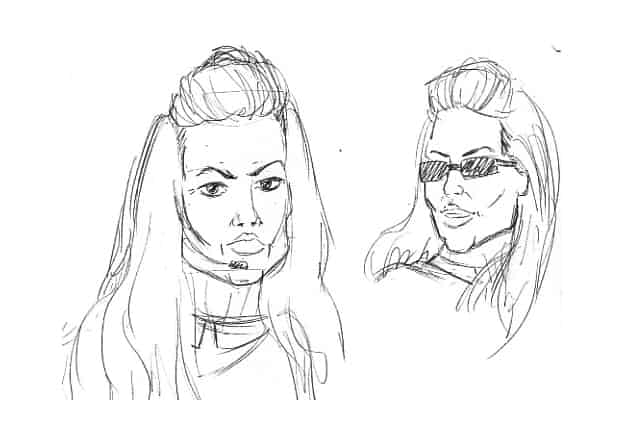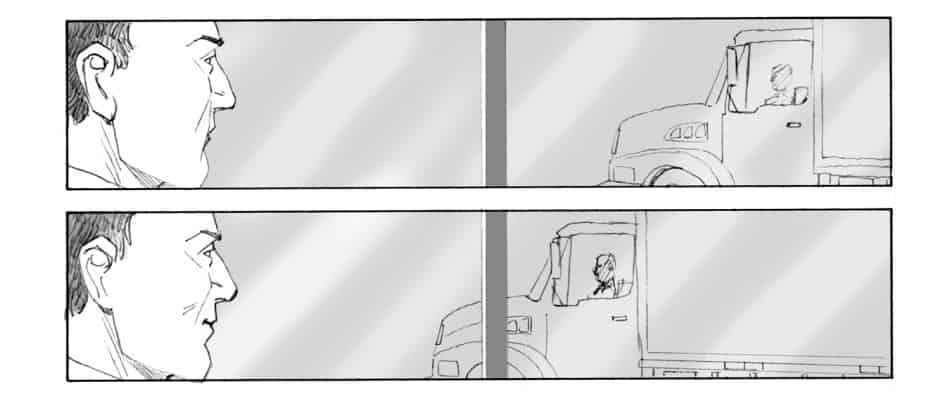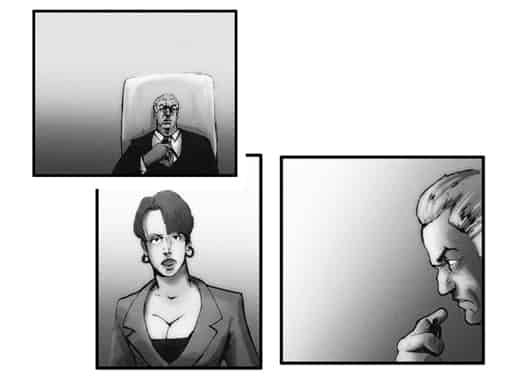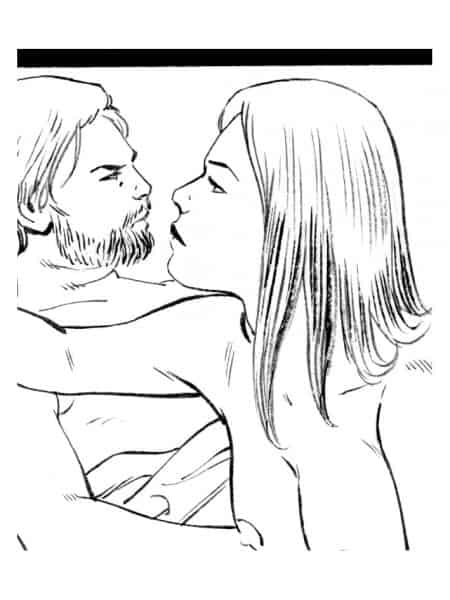
Writing
Knowing a location to write a story
At first, “Plunging into the Depths” was supposed to take place in Corsica. The problem was that we weren’t familiar with its geography so it was hard to make sure our scenes would suit the surroundings. So we moved the action to Reunion Island, which had everything the action needed but was familiar to one of our collaborators.
Roslo’s other look
Initially, Roslo was supposed to be a man. During our discussions with Léon Leclerc, he said he felt that the Apatrides universe was missing female characters, so Léon created a sketch (see image). When we launched the project, we kept the idea of having a woman as the Consortium’s head of security but we sought to give her a look that would better mesh with late-80s fashion.
Respecting the hero’s world
On July 14, 2011, Peter DeCourcy wrote on Comicbookdaily about the theory of comic-book writers. In his opinion, there are only four or five authors who really stand out from the herd within the US comic book universe, and he seemed to deplore the fact. We disagree. We worry about authors who want to impose their narrative style onto a universe that already has a very rich existence. Sometimes it seems that more emphasis is placed on a distinct style than on the main character, which the style is supposed to render.
Behind the Scenes : Burning Hatred
On the subject of the different levels involved in reading a comic, let’s take a look at the last scene between the Mogul and Roslo. Simply by the way he handles his pen, the Mogul manages to convey a very keen sense of threat. A great moment—and one that wasn’t even included in the original script.
Reading a Comic Strip
Without trying to give a lesson on comics–which others would do much better than we could–we feel that there are three levels involved in reading a comic strip. First there’s what the bubble says, which is the most elementary and should be the least ambiguous level. Then there’s what the picture shows. And lastly, there’s how the page is laid out: the number and size of frames. This last point affects the story’s rhythm. So at the writing stage, it’s important to think about these three dimensions in order to give the story more punch.
Same Gesture, Two Visions
The idea of self-sacrifice is an interesting one. When a hero does it, it’s chivalrous or a way of getting around a deadlock. But when a villain does it, it’s because he’s “hot headed,” and the gesture seems to lose all nobility. Often, a villain who sacrifices himself does it because he’s trapped and has no other way out. A sane person would just give in. So then, how do we explain such a radical gesture? Can we imagine that a villain might sacrifices himself because he’s always lived on the fringes of society and can’t accept anyone making him do anything—even up to the end? We are not trying to embellish the gesture here, but to find a rational explanation to a question that is surely ultimately unanswerable.
Being Open to a Change of Heart
Initially, Volcanne was going to be called Sinistro. We changed our mind just prior to publication because we decided that Sinistro sounded too typically villain-ish. So we opted for a more neutral-sounding name.
Behind the Scenes : World’s Best Friends
Louis Paradis and I had a few conversations about the level of nudity we wanted for the story. We didn’t want to create an overly chaste image, which wouldn’t have been believable because the characters had just spent torrid night. At the same time, we didn’t want nudity simply for nudity’s sake, to satisfy a kind of voyeurism. We think we found an interesting balance.






